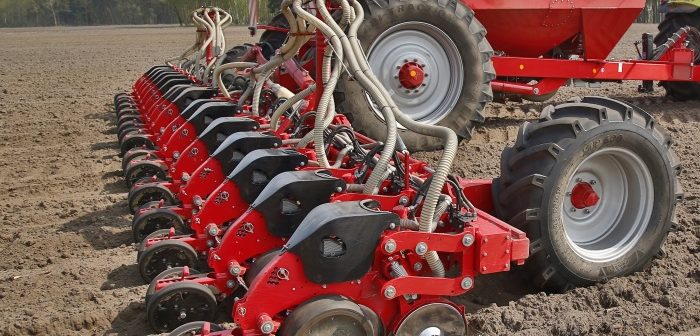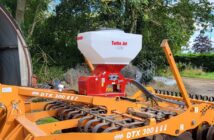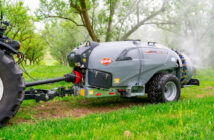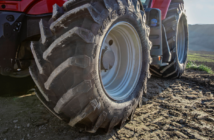Horsch has revealed its advanced coulter control system, AutoForce, that automatically adjusts coulter pressure on the move to varying soil conditions. Drill operators typically set coulter pressure to their heaviest soil conditions, but detailed research by Horsch has revealed this can lead to increased compaction when moving into lighter soils.
The 300kg per row unit coulter pressure on the Horsch Maestro maize drill is the highest in the industry. This is ideal for heavy land but the research, conducted across Europe in the past three years, has shown a more even seed germination by reducing coulter pressure in lighter soils. Using hydraulic rams, AutoForce is the only system available to continuously adapt coulter pressure while drilling to prevent compaction on light land or reduced sowing depth on heavy land.
Buckinghamshire-based Robert Tuckwell Contractors were one of the first in Europe to have the system fitted when they took delivery of a new 12m Maestro 16 SW in 2016. Drilling more than 3200 acres of maize to feed two local anaerobic digester plants, the contractors were impressed with the Maestro drill and the large increase in capacity it offered over their existing 8-row 6m drill.
“AutoForce was not a feature that we specified when choosing the Maestro and I was initially sceptical of its value,” admits Scott Hosking, main drill operator for Robert Tuckwell. “However, having worked with it for a season I would certainly specify it on my next drill.”
Autoforce uses sensors to monitor two 8-row sections on the 16-row machine. Separate hydraulic arms provide down pressure for each section, enabling the dedicated software to adapt each section independently. The system, which can also be specified as one section for smaller machines, maintains accurate seed depth placement at higher speeds and offers greater control over the standard system that provides uniform pressure across all rows.
“We have a wide range of soil types to consider and often we would set the drill to a heavier soil only to find the coulters would become buried on the lighter land,” explains Scott. Horsch’s engineers enhanced the system response time during the season allowing it to react to change more rapidly.
“Now, with AutoForce in place, we can maintain our desired drilling depth of 2.5 to 3 inches far more easily and it has also allowed us to increase our speed too. We run about 8kph in heavy clay pushing up to 12kph when the seed-bed condition allows, and all with a seed placement accuracy of 98% or above,” adds Scott. Maize is renowned for its lazy root structure and ensuring accurate seed and fertiliser placement is essential for good yields.
Covering 160 acres per day with the Maestro, the drill has improved the contractor’s logistics operations too. “We can get about 120 acres of seed in the tank which means we only need one top-up during the day. We have also moved to big bag seed and big bag micro-granular fertiliser which has further simplified operations,” says Scott.
“The presence of such a big drill on some of the smaller farms raised concerns to start with but once they saw how even the planting was and how good the crop looked, we haven’t had any complaints. I think AutoForce has certainly enhanced the seed placement,” concludes Scott.




